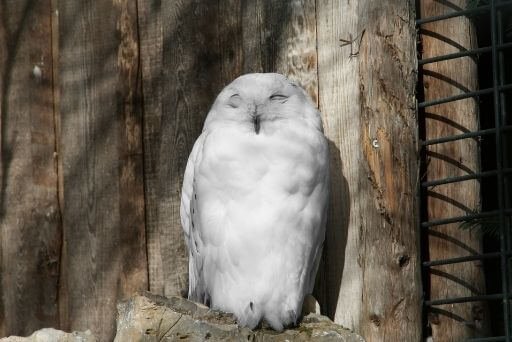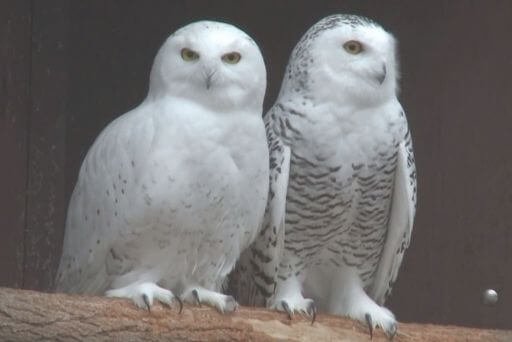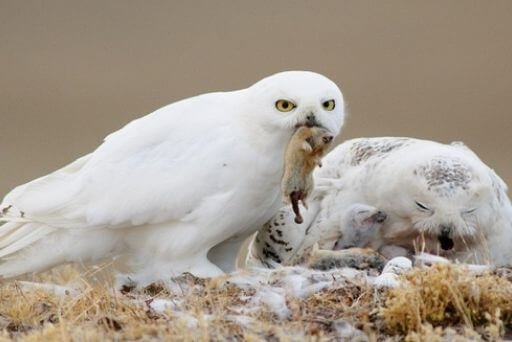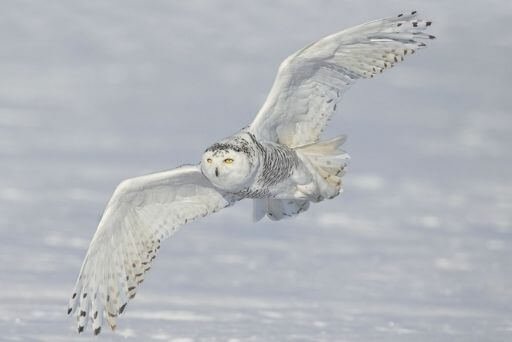Facts of Snowy Owls: Here’s everything you need to know about this rare species
The white plumage of the white snow owl screams its Arctic origins. With the yellow eyes, white feathers, and notable wingspan, this species of bird never fails to pique the imagination. However, the IUCN Red List has categorized this species as vulnerable. So the chances are we may not be able to see this majestic bird if proper measures are not taken to prevent the risk factors. Here are some facts of snowy owls that make them even more fascinating.

- They Have Different Sleep Schedule
Most owls tend to stay awake at night, resulting in the phrase ‘night owl.’ And this is one of the facts of snowy owls that is very curious: the white snow owl is different from the other owls. These creatures are not strictly diurnal or nocturnal, and their activities differ from the location and the sunlight quantity they get.
Additionally, the kind of prey available in the region also decides the sleep schedule of these owls. Considering that they mostly breed in regions where the sun never sets, it is a good thing that they have the ability to find prey during the day.

- The Difference Between Male And Female Snowy Owl
The male snowy owls feathers dark brown bars when they are young and turn whiter with the growing age. On the other hand, the female snowy owls have dark markings throughout their lives. Although even females and males have some marking, it is the males who have the whitest body. Since the white feathers have a hollow structure, they provide better warmth than the ones with pigments.
- They Love Snow
Snowy owls love winters, and they can sit through snowy nights without flinching. Their legs and feet are covered in thick feathers that offer them proper insulation from the extreme cold of the Arctic climate. Additionally, there are thick pads under their feet as well, allowing them to walk easily on the snow. These pads and feathers work like shoes to protect these birds from sinking into the snow.
- They Have Heavy Feathers
Snowy owls have a lot of feathers that work to keep them warm in the snow. However, these feathers significantly add to their weight, approximately 4 pounds. This thick covering of feathers makes these species the heaviest species of owls in North America. In fact, they are one pound heavier than the great horned owl.
Additionally, they have double the weight of the tallest owl of North America. The female snowy owls are larger opposed to males as they are more than 2 feet taller and come with 6 feet of wingspan.
- Snow Owls Have Different Names
Scientifically, these owls are known as Bubo Scandiacus. However, their appearance, along with ghost-like science, has prompted people to call it different names. Some of the names of these owls include ghost owl, Arctic owl, great white owl, Ookpik, the white terror of the north, and Scandanavian night bird. They are the same genus as horned owls as well as the eagle owls.
- They Have Impressive Range
Snowy owls inhabit the Arctic Circle tundra during the breeding season. Some of the popular breeding areas in northern America are northeastern Manitoba, Aleutians in Alaska, north Labrador in Canada, and northern Quebec.
And for the rest of the year, these birds range from the southern borders of Canada to the Arctic sea ice. Moreover, every four years, there is a mega-irruption when the owls travel to Korea, Japan, Bermuda, Florida, Texas, and Hawaii.

- Snowy Owls Store Their Food
In the breeding season, the snowy owls tend to develop a cache of prey. The males bring food to the nest and the females store it by making a wreath-like formation in the nest. Generally, they tend to stock up around 10 to 15 items; however, researchers have recorded up to 83 carcasses. Moreover, males will also create food caches at different perches with some 50 lemmings. This way, they will always have food during the period when hunting is scarce.
- They Take Early Leave
Snowy white owls spend only around three weeks in the nest prior to leaving. These creatures merely toddle around the Arctic as they will not fly for another month. According to scientists, this behavior is associated with sibling rivalry and avoiding a predator.
They move out of the nest before they can fly; however, they use tundra grasses to gain shelter from the weather and predators. But during this time, parents continue to feed the owlets and teach them how to hunt.
Final Thoughts
The beauty, range, activities and all other facts of snowy owls are different from other types of owls. Unfortunately, these species have become endangered mainly due to the fact that they struggle to find food. Poaching activities have also emerged as one of the reasons contributing to their extinction. As of now, there are less than 100,000 snowy animals left on the planet.





